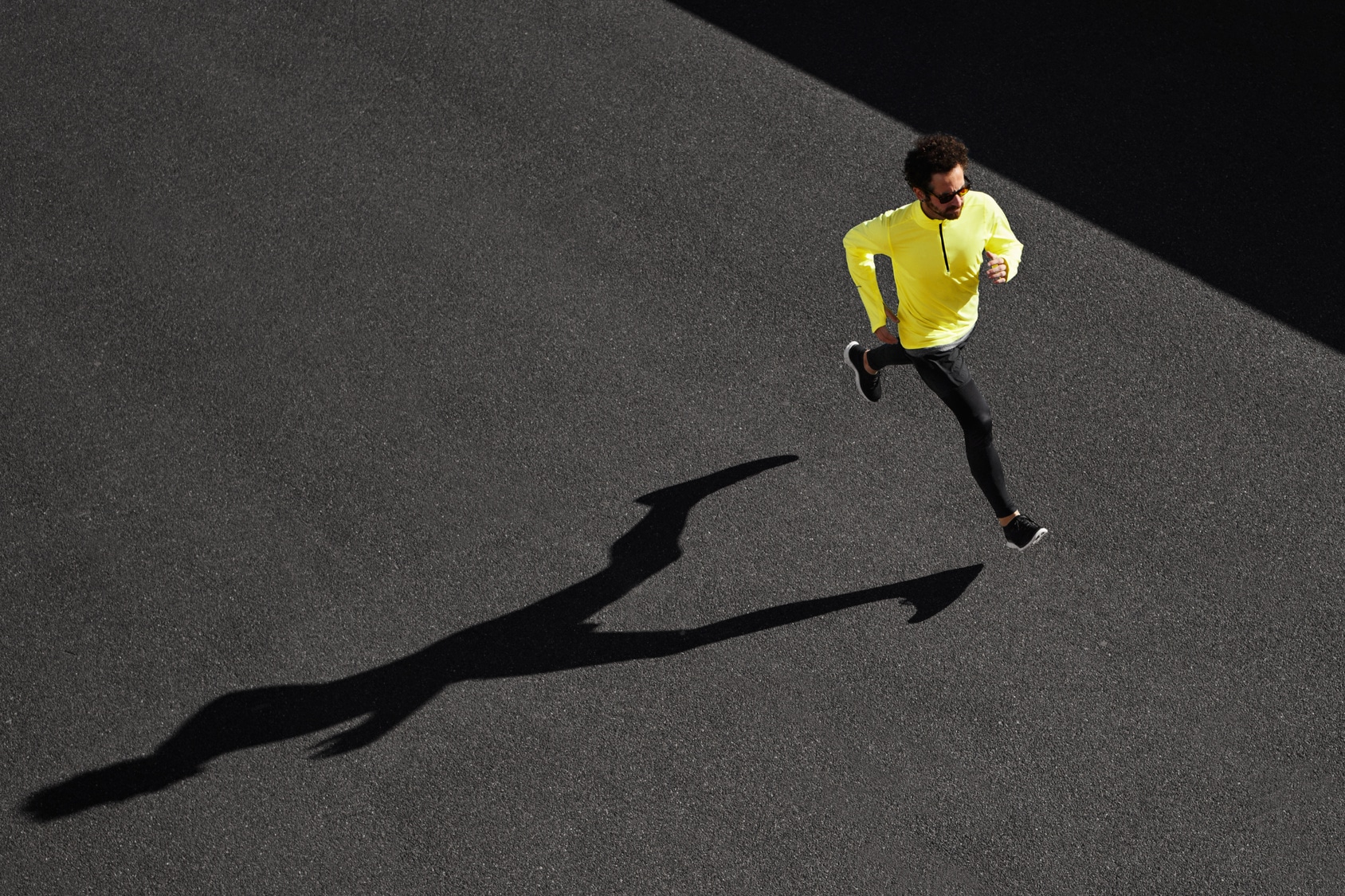Dreaming of conquering a marathon but not keen on running? You’re in the perfect spot.
Guess what? You don’t have to be a seasoned runner to cross that 26.2-mile finish line. In fact, walking the full marathon distance has gained popularity, offering a fantastic way to test your endurance and resilience without the impact of running. It’s a journey, both physically and mentally, that draws people from all walks of life (pun intended!).
Now, don’t be mistaken – walking a marathon is no mere stroll in the park. It demands dedication and smart training. But fear not!
I’m here to walk you through (pun intended) the best strategies, tips, and a training schedule that will have you crossing that marathon finish line, one step at a time.
Ready to embark on this walking marathon journey? Let’s lace up those shoes and dive in.
Is It OK To Walk A Marathon?
Yes, walking a marathon is totally fine, and guess what? It’s actually becoming a favorite option for many people, especially those just dipping their toes into the marathon world. The heart of a marathon doesn’t beat solely for those who sprint or jog; it’s really about conquering that 26.2-mile challenge, no matter how you do it. It’s a celebration of persistence, guts, and the unique story each participant carries with them.
Over the past few years, the idea of walking a marathon has really taken off, bringing a fresh vibe to events. This change has opened the doors wider, making marathons a grand tent where more people can step in and say, “Yes, I can do this too.” Whether you’re walking to hit a fitness goal, challenge yourself, or just soak in the vibrant energy of marathon day, making it to the finish line on foot is a victory in itself.
Many marathon organizers have caught on to this trend, offering longer time limits to ensure that walkers get their moment of triumph, too. These marathons are decked out with everything you need, from aid stations for a quick energy boost to cheering fans to keep your spirits high. It’s all set up to make your marathon walk not just achievable but also an experience you’ll never forget.
Not ready for a marathon? Then try half-marathon walk plan or my couch to half marathon program.

Why Walk a Marathon?
Ever wondered why someone might choose to walk a marathon instead of running it? Let’s dive into why this might just be the coolest idea you’ve heard in a while, minus any fluff.
Heart Health
Imagine giving your heart the kind of workout that’s more of a love letter than a demand. Walking long distances does exactly that. It’s a gentle nudge rather than a shove to your cardiovascular system, helping to keep it strong, improving your blood flow, and keeping those heart disease gremlins at bay.
Here’s the average heart rate during a marathon.
Easy Does It
Think about the difference between a rock concert pounding in your joints when you run and the smooth vibes of a jazz club—that’s walking for you. It’s all about being kind to your body, avoiding the encore of pains and aches that running might applaud. Walking is the chill cousin in the fitness family, there for a good time without the drama.
Building Stamina
Walking is might take longer, but you’re building endurance and resilience with every step, brick by brick. It’s not just about making it to the finish line; it’s about strengthening your willpower and determination.
Walking as Meditation
There’s something special about walking at a consistent pace—it’s like meditation in motion. It gives your mind a break, letting stress evaporate with each step. It’s your chance to breathe deeply, find your calm, and sync up with the rhythm of your footsteps.
The Sweet Taste of Victory
Crossing the finish line of a marathon, no matter how you get there, is a rush. It’s a fist bump to your dedication and grit. That sense of achievement? Pure gold. It’s a confidence booster, a solid reminder that you’re capable of conquering big, bold challenges.
Mindfulness on the Move
Walking a marathon isn’t just about physical endurance; it’s an exercise in mindfulness. With more time to soak in your surroundings, you’re not just moving through the landscape—you’re part of it. From the city’s heartbeat to nature’s quiet whispers, walking connects you with the world in a deep, meaningful way.
Everyone’s Invited
What’s great about walking a marathon is that it’s an open invitation—no matter your age, fitness level, or speed. It’s a universal welcome to a challenge that says, “Hey, you can do this too.” It’s inclusive, embracing everyone who wants to take part in the journey.
Before You Decide to Walk a Marathon
Before you set your sights on walking a marathon, let’s take a moment to consider what it really means to embark on this journey. It’s not just about deciding to walk instead of run; it’s about understanding and preparing for the commitment ahead.
The First Step: Can You Handle It?
Think of starting your marathon journey as testing the waters before diving in. Can you take a brisk hour-long walk without feeling like you’ve just climbed a mountain? That’s your sign that you’re ready to start training. It’s like the first piece of a puzzle, showing you’re set for the bigger picture.
Time: Your New Best Friend
Training for a marathon, even at a walking pace, is no small feat. It asks for a chunk of your time—think about dedicating three days during the week for about an hour each, plus a longer session on the weekend that can stretch from a morning coffee to lunchtime. Yes, it’s a commitment, but it’s also an investment in achieving something monumental.
Who Can Walk a Marathon?
Who says you have to fit into a certain mold to walk a marathon? The beauty of marathoning is that it welcomes all kinds of people, regardless of age, size, or fitness level. I’ve chatted with folks who’ve expressed doubts about their weight or age, thinking they don’t quite match the marathoner stereotype. But let me set the record straight: there’s no one-size-fits-all when it comes to marathoners.
Here’s the thing: being a marathoner isn’t about ticking off boxes on some arbitrary checklist. It’s about the dedication and determination to put in the work, day in and day out. Sure, training might seem daunting at first, but it’s all about taking those small steps forward, consistently and steadily.
And age? Forget about it! You’re never too old to lace up those shoes and start a fitness journey. Whether you’re in your twenties or your golden years, the road to marathon success is open to everyone. It’s just a matter of listening to your body, pacing yourself, and making smart choices along the way.
How Long Does it Take To Walk A Marathon
How long does it take to walk a marathon? Ah, the million-dollar question! While I can’t give you an exact answer, I can definitely paint a picture of what to expect on your journey.
Walking a marathon is like embarking on an epic adventure—one filled with challenges, triumphs, and everything in between. As you step onto the course, you might feel a surge of excitement propelling you forward. But as the miles unfold, fatigue might start to creep in, slowing your pace.
So, let’s talk numbers. On average, walking a marathon can take anywhere from 5 to 9 hours, depending on your speed and stamina.
For those who set a brisk pace, you might find yourself striding across the finish line in about 6 hours. That’s an impressive feat requiring a consistent 13:43 mile pace.
If you’re taking it at a more leisurely pace, expect to finish in around 8 hours. And if you’re maintaining a steady, average speed of about 3.1 miles per hour, you’re looking at crossing the finish line in roughly 8 hours and 23 minutes. And here’s how long it takes to walk a mile.
But hey, don’t get too caught up in the numbers. Walking a marathon is about more than just the time on the clock—it’s about the journey itself, the sights you see, and the sense of accomplishment as you conquer each mile.
Can You Walk A Marathon Without Training?
The question of whether you can walk a marathon without any specific training is a bit like asking if you can drive cross-country without checking your car’s oil level: it might be possible, but it’s not advisable. Your success in walking 26.2 miles without prior preparation really comes down to your usual fitness routine.
If you’re the type who’s always on the go—maybe you’re on your feet at work all day or you’re just naturally active—you’ve got a slight advantage. This regular movement can act as a basic form of endurance training, giving you a bit of a head start for the marathon road ahead.
However, if your idea of a busy day is making it through a marathon of your favorite TV series, then tackling an actual marathon without getting your body used to the idea first might not be the best plan. Diving into such a massive physical challenge unprepared can lead to injuries.
Even if you’re already generally fit, completing a few long walks or even hikes in the weeks leading up to the event can make a world of difference. Consider these outings as your “dress rehearsals” — they’re your chance to make sure you’re ready for the big day, both physically and mentally.
Looking for more challenge? Check my couch to marathon plan.
Walking A Marathon Training Plan
Embarking on the journey to walk a marathon is no small feat, especially if you’re charting this course from the starting line of zero. But fear not—I’m here to guide you through a meticulously crafted training plan designed to transition you from zero to marathon hero in 4 to 5 months.
Crafting Your Marathon Walking Schedule:
Your marathon quest begins with a 16 to 20-week training schedule, a golden timeframe that strikes a perfect balance between challenging your body and providing ample time for adaptation and growth. Start with a commitment to 3 to 4 walking sessions each week, setting a solid foundation for what’s to come.
As you find your rhythm, the intensity and frequency of your training will escalate to 4 to 6 days per week. This phase isn’t just about accumulating miles under your belt; it introduces a mix of walking and cross-training activities. The objective here is multifaceted—enhancing your overall endurance while simultaneously fortifying your muscles and joints to bulletproof you against potential injuries.
Gradual Intensity Increase: The Key to Success
Imagine your training as a steady ascent up a hill. Initially, the slope is gentle, with 3-4 mile walks that feel more like a brisk stroll than a climb. With each passing week, you’ll dial up the challenge, increasing your mileage by about 10-15%. This incremental approach is far from arbitrary—it’s a calculated strategy designed to progressively bolster your endurance and muscle fortitude, preparing you not just to start the marathon, but to conquer it with confidence.
Follow a Walking A Marathon Training Plan
Planning to walk a marathon? Smart move! But before you conquer those 26.2 miles on foot, you’ll need a solid training plan to get you across the finish line feeling strong and accomplished.
Even if you’re opting for a steady walk rather than a run, building endurance is key. Long walks will be your bread and butter, helping you gradually increase your stamina so you can tackle the full distance with ease.
Just like a running training plan, your marathon walking regimen will include a mix of workouts. You’ll have your weekly long walks to gradually increase your mileage, cross-training sessions to strengthen other muscle groups, and power walking intervals to boost your overall fitness level.
Don’t forget those easy walks and rest days for recovery—they’re just as important as the hard work!
Here’s How the Weekly Walks Break Down:
- During the Week: Target two walking sessions, each lasting around 45-60 minutes. These aren’t just random strolls; they’re the foundation of your endurance building, getting your body used to the rhythm of regular, ongoing activity.
- Weekend Long Walks: Save the longer stretches for the weekend. Start with a 60-minute walk and then, each week, tack on an extra 15-20 minutes. This isn’t just about increasing your leg power; it’s about mentally and physically gearing up for the marathon distance.
- Cross-Training. Mixing in activities like biking, swimming, or yoga keeps things interesting, wards off the monotony, and plays a big part in dodging those nagging overuse injuries. Plus, it rounds out your fitness, making sure you’re strong all over, not just in your walking muscles.
- Rest Days. Let’s talk about the magic of doing, well, nothing. Rest days are your best pals for muscle repair, getting stronger, and giving your brain a break too. Make sure you pencil in at least two of these golden rest days each week. Your body and mind will thank you, big time.
Hitting Your Training Peak:
Aim to hit your longest walk—about 20-22 miles—around three weeks before the big day. This is your “dress rehearsal,” giving you a taste of the marathon distance and building up that all-important confidence. It’s your proof point that yes, you can tackle the full 26.2 miles.
Tapering Phase: Getting Ready for the Big Day
Hit your longest walk peak? Time to ease off the gas. Tapering means you’ll cut back your walking mileage by about 25% each week as you get closer to marathon day. It’s your body’s chance to shake off the training load and prime itself for the big show.
Here’s how to make the most of it:
- Look Back: Take a moment to reflect on your training journey. You’ve come a long way, and that’s worth celebrating.
- Get Organized: Start thinking about marathon day itself. What are you going to wear? How will you fuel up? Nailing down these details now means one less thing to worry about on race day.
- Visualize Success: Spend some time picturing that finish line moment. Imagine the crowd, the noise, the feeling of achievement. It’s a powerful way to get your head in the game.
Start With The Half
As a seasoned running coach, my advice to all aspiring marathon walkers is to begin with a half marathon. This isn’t just about clocking miles; it’s about getting your body used to the demands of a structured training plan and gradually ramping up those long walks.
Don’t get me wrong. I’m not implying that it’s impossible to tackle a marathon head-on or adopt a run/walk strategy for your debut race, logging some miles at the half marathon distance can instill a sense of confidence and readiness for the rigors of a full marathon training regimen.
Choosing the Right Marathon
Picking the perfect marathon for walkers is a bit like finding that cozy, fits-just-right sweater: it’s all about comfort and the right fit, especially when it comes to those all-important cut-off times (COT).
These times can swing widely from one event to the next—think five to seven hours on average.
And if you’re eyeing a trail marathon, you might just luck out with even more generous times thanks to their tough-as-nails routes.
Here are a few walker-friendly marathons that get two thumbs up:
- London Marathon: Join thousands of walkers from around the world as you traverse the historic streets of London, soaking in the sights and sounds of this world-class event.
- RunDisney Races: If you’re looking for a sprinkle of fun with your marathon effort, these themed races are super welcoming and walker-friendly.
- Honolulu Marathon: No cut-off time? No problem. This one’s a walker’s paradise.
- Boston Marathon Jimmy Fund Walk: Walk for a cause and soak in the iconic Boston Marathon course vibes, all at your own pace.
- New York City Marathon: With a diverse and vibrant course, this iconic event welcomes walkers and offers ample support along the way.
- US FreedomWalk Festival: Tailor-made for walkers, this event is all about the friendly vibes.
- Big Sur International Marathon: Experience breathtaking coastal views and a relaxed atmosphere as you walk along the stunning California coastline.
Choose The Right Shoes
Choosing the right marathon shoes is like picking the ideal tires for a road trip. The perfect pair means less fatigue and more comfort mile after mile.
Here’s the scoop on finding your perfect shoe match:
- While running shoes are often a go-to for their endurance-friendly design, don’t overlook walking shoes. They’re engineered with cushy love specifically for the walking stride, offering even impact distribution and targeted support.
- A pro tip? Remember that feet tend to swell during those long walks. So, aim for shoes a size bigger than your everyday kicks to give your feet some breathing room and dodge blisters.
- The best spot to snag your dream walking shoes? A specialty store where the staff knows their stuff. They’re like your personal shoe matchmakers, ready to pair you with shoes that fit not just your feet, but your whole training vibe.
- A real-deal fitting is more than just a number on a measuring tape. It’s about checking out your walk, your arch, and even diving into your training plan to ensure those shoes are the perfect sidekick for your marathon journey.
Getting these two big decisions right – the marathon that welcomes walkers with open arms and the shoes that’ll carry you comfortably across those miles – is a huge step toward crossing that finish line with a smile.
Final Thoughts
Training to walk a marathon is an ambitious goal, but with the right plan and mindset, it’s entirely achievable.
Remember, this journey is as much about enjoying the process as it is about crossing the finish line.
Celebrate your training milestones, listen to your body, and approach race day with confidence and excitement. Here’s to your marathon success!














